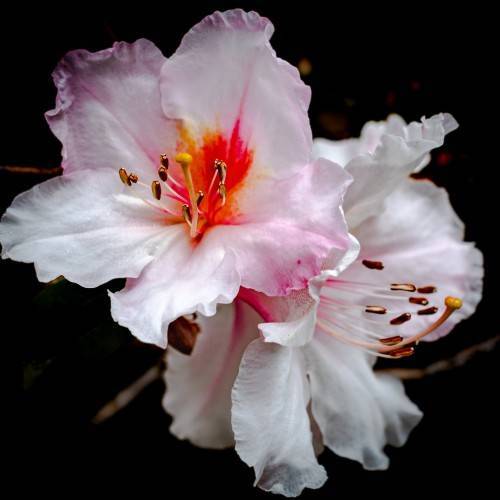
rhododendron
Rhododendron 'Ken Janeck'
Cycle:
Perennial
Watering:
Average
Hardiness Zone:
5 - 8
Flowers:
Flowers In Spring
Sun:
Part shade,full shade
Leaf:
Yes
Growth Rate:
High
Maintenance:
Moderate
Care Level:
Medium
watering
Rhododendron 'Ken Janeck' prefers moist soil that is kept consistently damp but not wet. Water the plant thoroughly when the top 2 inches of soil dries out. In the summer and spring months, you should water the plant every 1-2 weeks. In the fall, water every 2-3 weeks and in the winter, water every 4-6 weeks. Ensure that the soil is properly draining and isn't sitting in water for too long as this may cause root rot. Additionally, Rhododendron 'Ken Janeck' plants prefer additional humidity. Mist the leaves every few days to provide this.
sunlight
For optimum growth, Rhododendron 'Ken Janeck' prefers bright, indirect sunlight from either an east or west-facing window. Morning sun is best since this will help avoid midday sun which may be too intense for this particular species. Rhododendron 'Ken Janeck' should receive at least 4-6 hours of sunlight per day and should be protected from direct sunlight during the hottest part of the day. In warmer months or in particularly warm climates, it is best to provide shade for the plant by using lightgardens or screens, to reduce the amount of heat coming in from direct sunlight. Additionally, Rhododendron 'Ken Janeck' should be kept away from drafts, as the cold air can be too extreme for the delicate foliage.
pruning
Prune Rhododendron 'Ken Janeck' in late spring when the buds have just set, just before the flowering period. Prune lightly to shape and remove any dead or damaged branches. Remove any weaker stems at the base with a sharp pruning shears. Leave only healthy, strong stems for flowering growth. Do not prune vigorously as this may interfere with the flowering and reduce the potential yield of blooms.
